Abstract
The measurement of life expectancy in terms of either good or poor health is a novel approach to studying the health of the population in Bulgaria. The pilot study reported here-carried out among people aged > or = 60 years in a middle-sized Bulgarian town-was designed to obtain information on the years of functional restrictions expected among the elderly. In accordance with the answers to a series of questions (recommended by WHO), subjects were categorized as disabled, handicapped, or having different states of perceived health. The indicators "disability-free life expectancy", "handicap-free life expectancy" and "healthy life expectancy" (based on self-perceived health) were calculated according to Sullivan's method. The results show, for example, that 8.0 of the 16.0 years that men aged 60 years may expect to live, on average, will be free of disability. For men aged 80 years the figures are 1.3 of 5.5 years. For women at 60 years and 80 years the results are 7.3 and 0.5 disability-free years of 19.2 and 7.3 expected life years, respectively. Similar results were found for handicap-free life expectancies and healthy life expectancies. At all ages, the proportion of life in a condition free of disability, free of handicap, or in perceived good health is substantially lower for women than for men. Women may expect to live longer, but a greater proportion of their life will be spent in poor health. The approach presented here for measuring the health status of the elderly may be helpful as an aid to planning medical and social care and for the development of public health policies.
Full text
PDF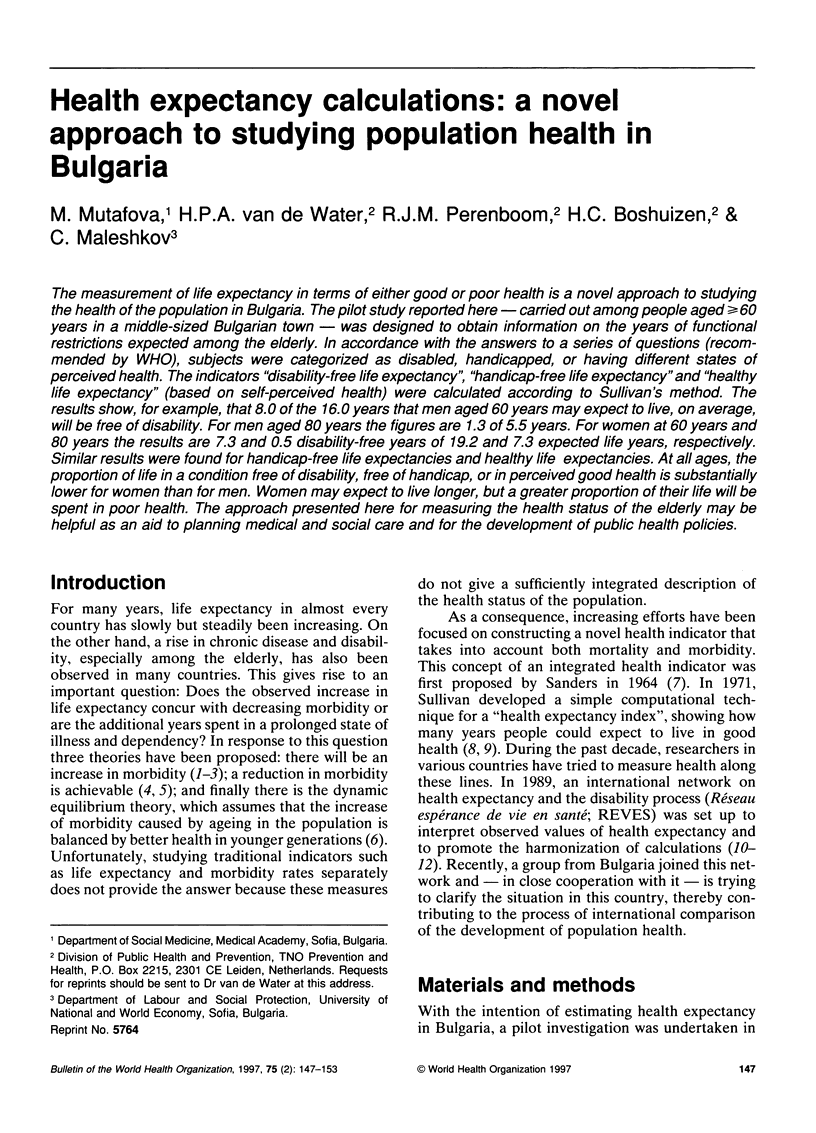
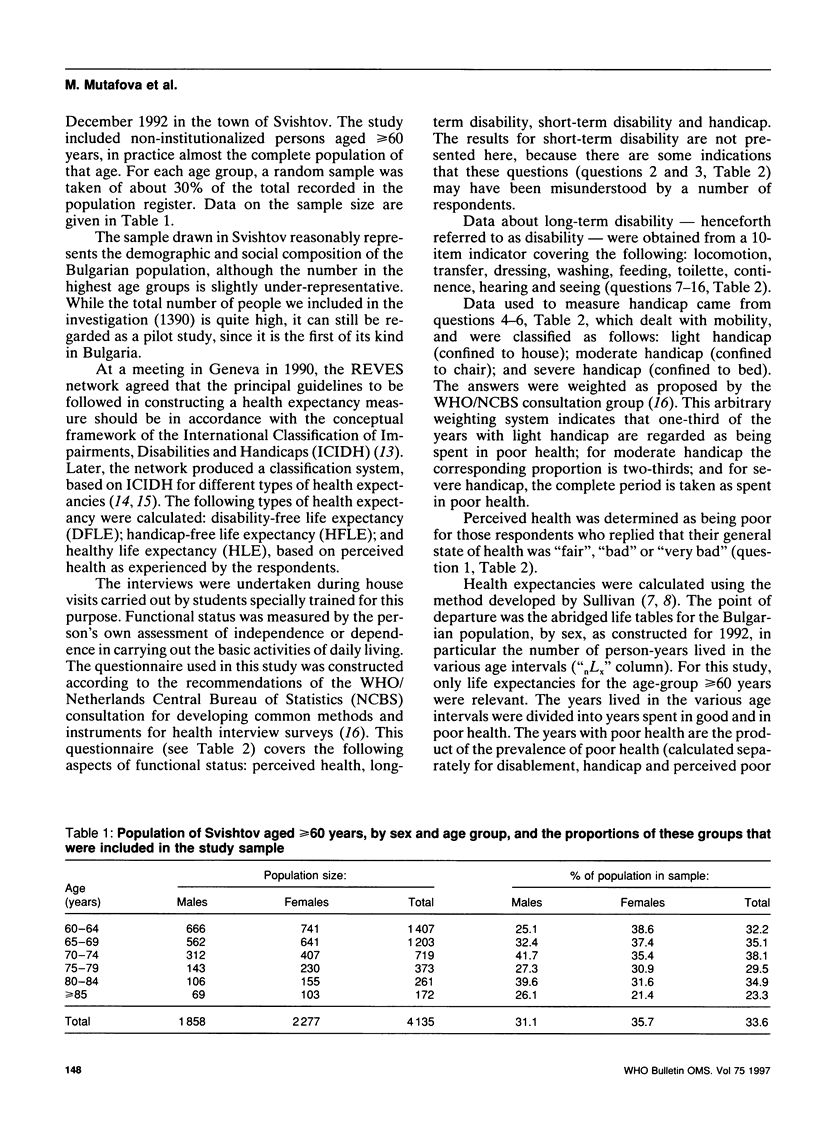
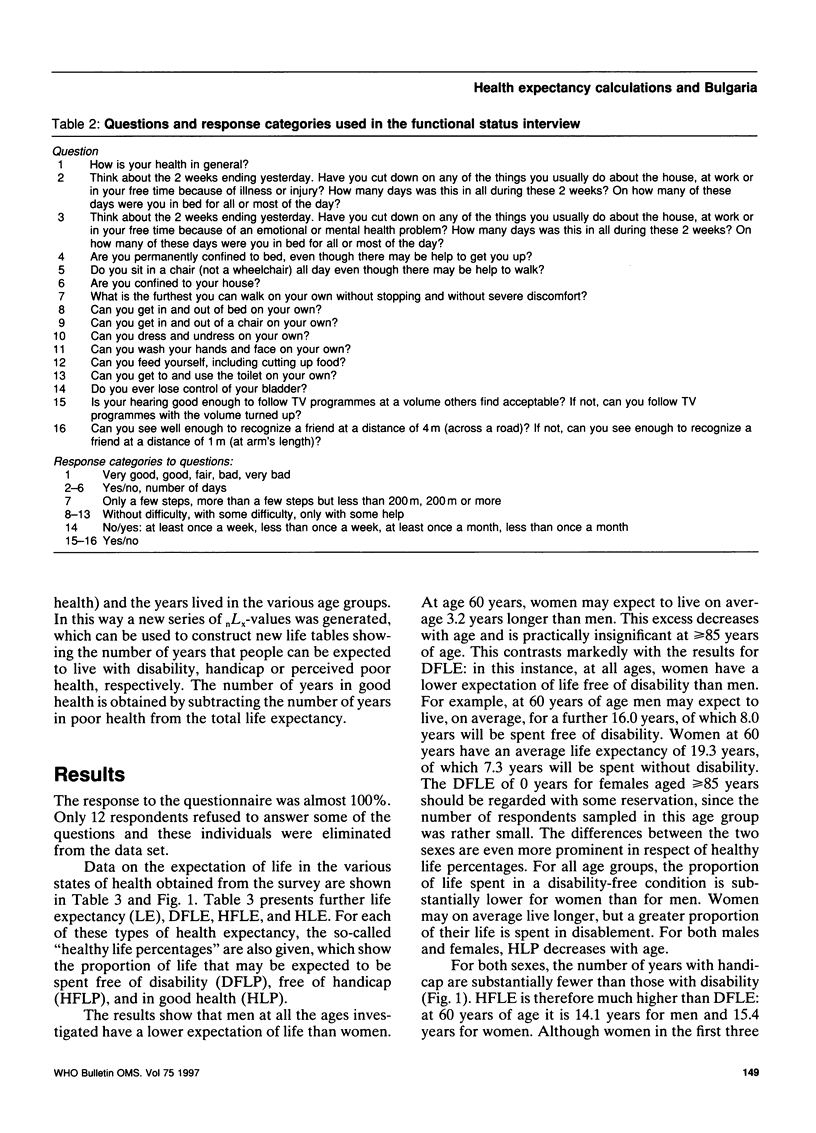

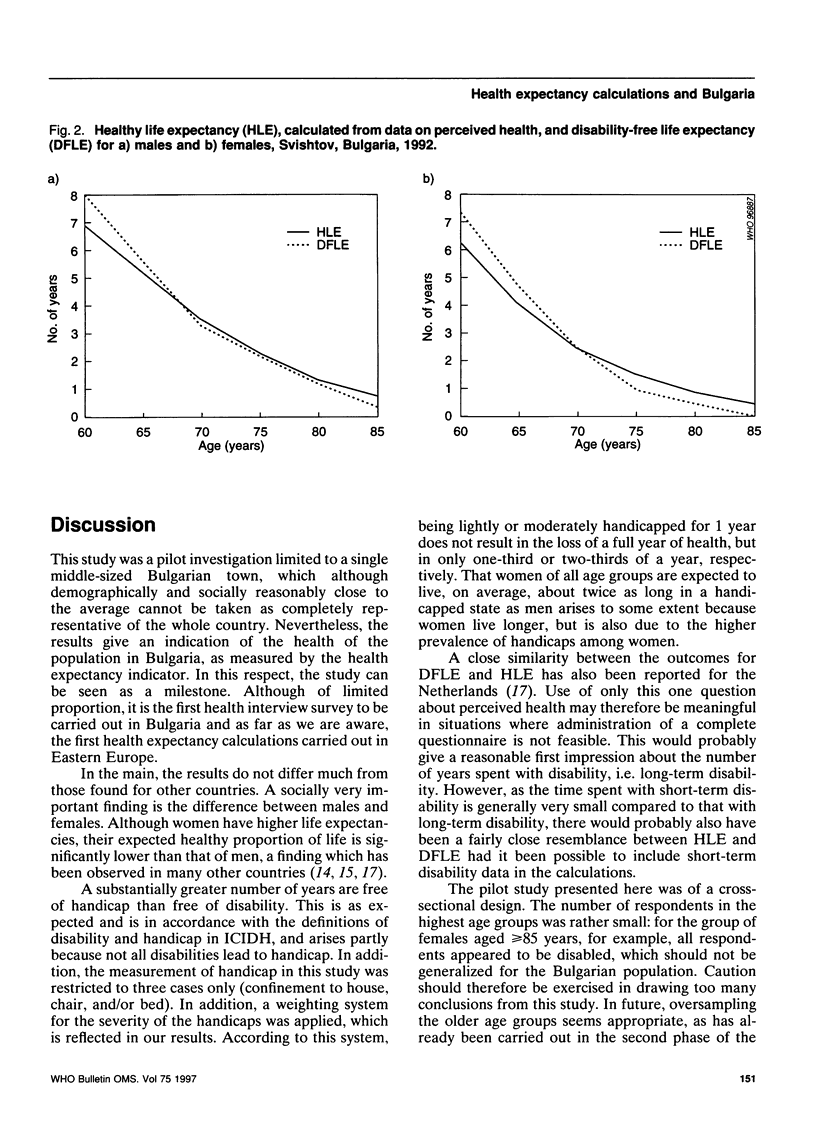
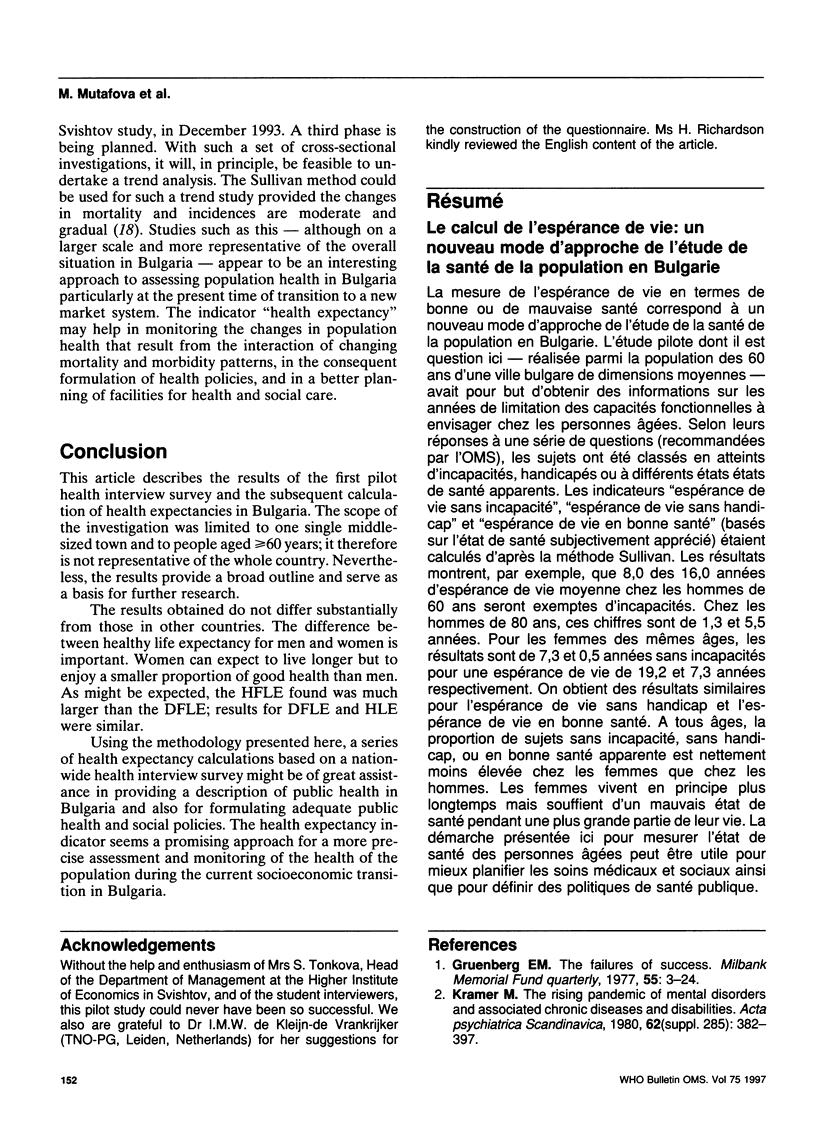
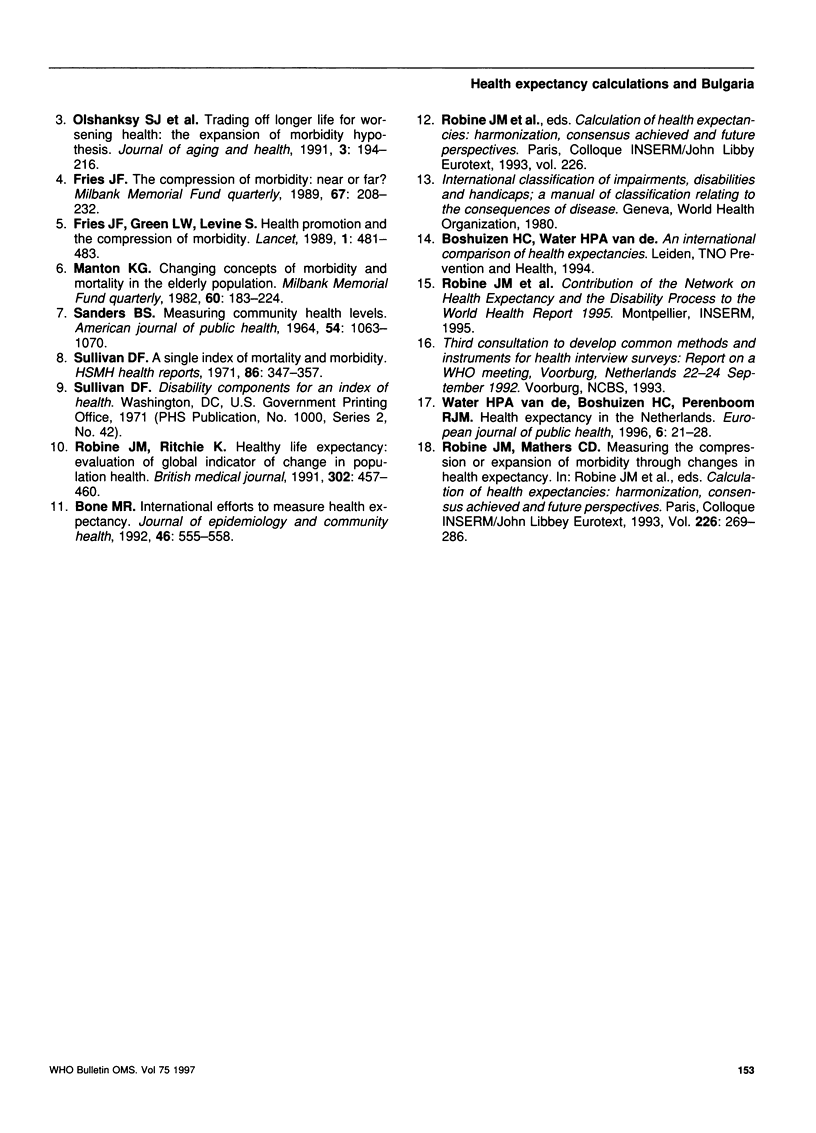
Selected References
These references are in PubMed. This may not be the complete list of references from this article.
- Fries J. F., Green L. W., Levine S. Health promotion and the compression of morbidity. Lancet. 1989 Mar 4;1(8636):481–483. doi: 10.1016/s0140-6736(89)91376-7. [DOI] [PubMed] [Google Scholar]
- Fries J. F. The compression of morbidity: near or far? Milbank Q. 1989;67(2):208–232. [PubMed] [Google Scholar]
- Gruenberg E. M. The failures of success. Milbank Mem Fund Q Health Soc. 1977 Winter;55(1):3–24. [PubMed] [Google Scholar]
- Manton K. G. Changing concepts of morbidity and mortality in the elderly population. Milbank Mem Fund Q Health Soc. 1982 Spring;60(2):183–244. [PubMed] [Google Scholar]
- Robine J. M., Ritchie K. Healthy life expectancy: evaluation of global indicator of change in population health. BMJ. 1991 Feb 23;302(6774):457–460. doi: 10.1136/bmj.302.6774.457. [DOI] [PMC free article] [PubMed] [Google Scholar]
- SANDERS B. S. MEASURING COMMUNITY HEALTH LEVELS. Am J Public Health Nations Health. 1964 Jul;54:1063–1070. doi: 10.2105/ajph.54.7.1063. [DOI] [PMC free article] [PubMed] [Google Scholar]
- Sullivan D. F. A single index of mortality and morbidity. HSMHA Health Rep. 1971 Apr;86(4):347–354. [PMC free article] [PubMed] [Google Scholar]


